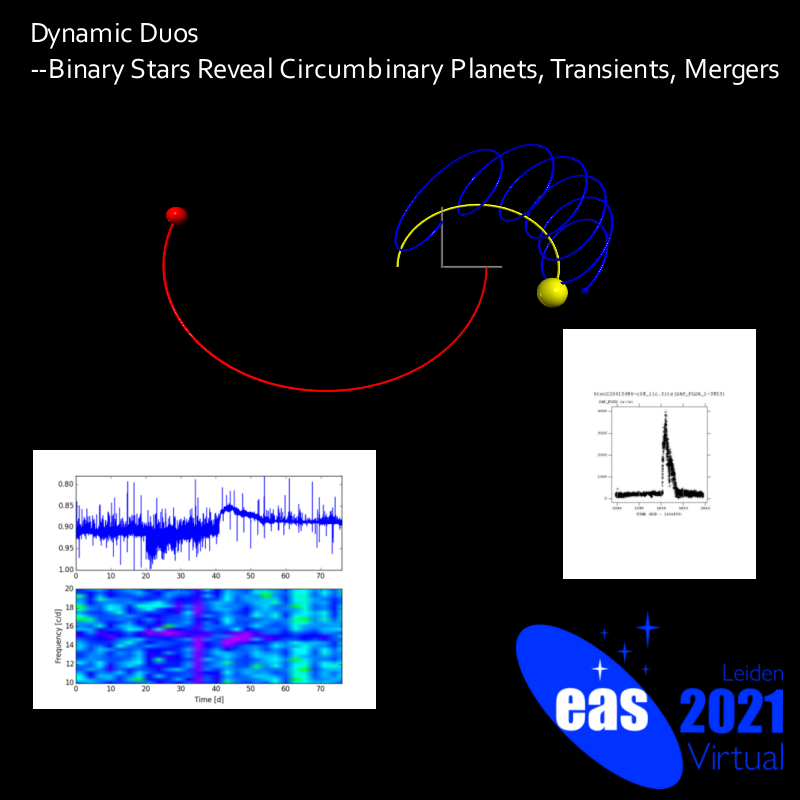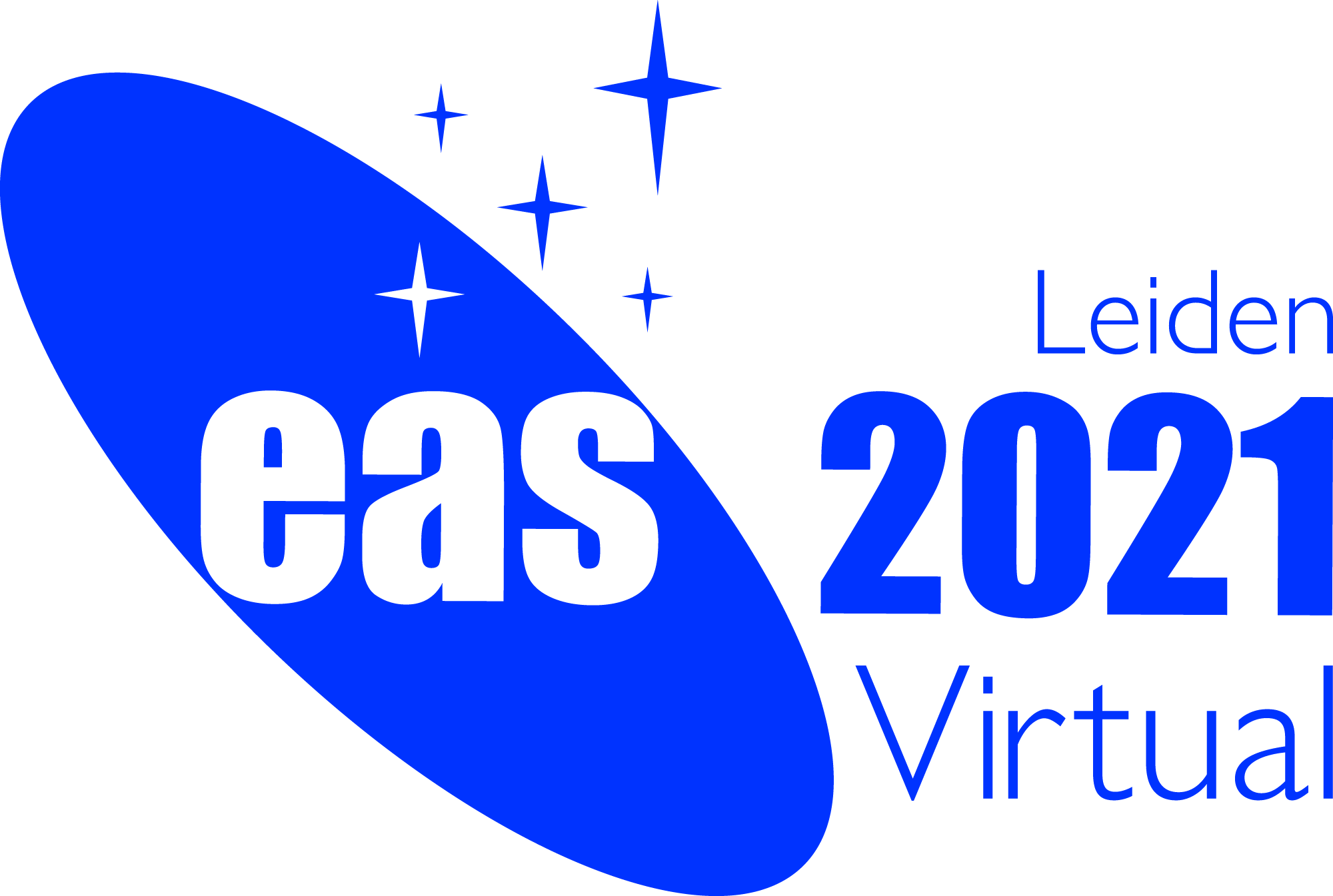Special Session SS7
2 July 2021
Dynamic Duos--Binary Stars Reveal Circumbinary Planets, Transients, Mergers
News:
We received numerous contributed papers (30 abstracts for 3 time blocks) and are carefully reviewing all the abstracts. Unfortunately we do not have enough time slots to accommodate all of the submitted papers. The SOC is till working on selecting contributed talks and posters and will complete its work by April 9.
Aims and scope
 The key role of binary star evolution in astrophysics is now well established. However, new phenomena, such as circumbinary planets have arisen and gaps in our understanding of the evolution of binaries remain. Our understanding of many of the basic properties of binary stars ranging from their formation, evolution, interaction, and their deaths is still incomplete.
The key role of binary star evolution in astrophysics is now well established. However, new phenomena, such as circumbinary planets have arisen and gaps in our understanding of the evolution of binaries remain. Our understanding of many of the basic properties of binary stars ranging from their formation, evolution, interaction, and their deaths is still incomplete.
Compact binaries also produce an amazing rich diversity of transient sources, such as Type Ia supernovae and gamma-ray bursts. Central to the formation of these compact binaries are the interaction processes within a common envelope. These processes remain one of the most critical but least well understood in stellar astrophysics. In this session, we plan to address this mystery with presentations on both observations and theory.
Recently a new aspect of binary star evolution has been discovered through planetary systems orbiting around and within constricted stellar systems that include binary pulsars. This discovery presents us with new challenges as well as new opportunities to construct refined models of planet formation. The successes of LIGO and Virgo in detecting compact mergers opens the door to finding compact binary objects, including cataclysmic variables, that have inspiraling exoplanets. How do planets form in binary star discs? How do planetary systems in such constricted environments subsequently evolve? How can planets' orbits remain stable in the evolution of the binary? We plan to have rich discussions of emerging ideas on planets in binary stars in this session.
Programme
- Planet formation in binary systems
- Circumbinary planets in binaries
- Information Algols yield on a common envelope phase
- Cataclysmic Variables as late evolutionary stage of close binaries
- Insights from Kepler, Tess, and Gaia observations of Algols and CVs
- Transient sources produced when compact binaries merge
- Computational modeling of binary evolution
Invited speakers
- Witnessing the Birth of a Massive Binary Star System
Dr. Kaitlin Kratter University of Arizona USA
- Electromagnetic Response on the Gravitational-wave Event Due to Merging Black Holes Surrounded by a Disc
Professor D.V. Bisikalo Institute of Astronomy of the RAS, Moscow, RUSSIA
- Chunking in an Eclipsing CV SU UMa Binary in the Kepler/K2 Field Dr. Michele M. Montgomery University of Central Florida (formerly), Valencia College and Keiser University (currently) USA
- X-ray Binaries and Cataclysmic Variables Dr. Franco Giovanelli National Institute of Astrophysics, Rome, ITALY
- Current Status of binary_c Modelling of Evolution
Dr. Rob Izzard University of Surrey, UK
- Binary Black Hole Mergers from Field Triples: Properties, Rates, and the Impact on Stellar Evolution
Dr. Silvia Toonen Anton Pannekoeck Institute, University of Amsterdam, NETHERLANDS
Scientific organisers
Irina Voloshina, Sternberg Astronomical Institute, Moscow State University, RUSSIA
Richard Olenick, University of Dallas, USA
Michele Montgomery, University of Central Florida, USA
Contact
voloshina.ira@gmail.com
olenick @ udallas.edu
Updated on Tue Apr 06 16:32:13 CEST 2021
|

 A power cut will shut down all EAS services on Tuesday, 10 January 2017 starting at 7:30 CET.
A power cut will shut down all EAS services on Tuesday, 10 January 2017 starting at 7:30 CET.


